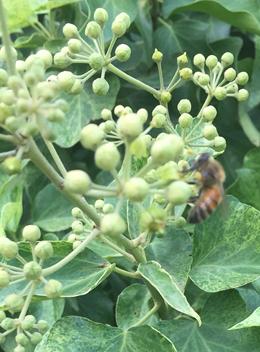
Canberra is home to a surprising number of creative and research-oriented events, and two of them are reflected in this issue of Axon. The first is the product of the 2018 annual DESIGN Canberra festival, which centred on the generative contributions of the architect Enrico Taglietti and the built environment he helped create in this city. The second event addressed the natural environment, with particular reference to the marriage of science and poetry, and what affordances this provides for the building of knowledge and understanding. The product of the editors of the poetry journal Not Very Quiet working in collaboration with the Axon editors, it brought together sixteen women poets and nine women scientists / scholars to present a public reading in mid-2019.
2019 was the fiftieth anniversary of the moon landing, and a year in which science and the environment have been very much on the minds of people all around the world; and this double header of local organisations generating discussion, creative practice and thinking about the built and natural environment sparked an interest in expanding these two sets of expressions into a special issue of Axon. To extend the conversation even further, we invited scholars, essayists and poets to submit works on this broad topic, and have sandwiched these between the two sets of texts and images that sparked this issue.
Section 1, then, contains the works presented at the symposium that was held as part of the festival. These include essays, photo-essays and a poem by Dave Drayton. Fuller details are provided in the introduction by Rachael Coghlan, CEO + Artistic Director of Craft ACT: Craft + Design Centre.
Section 2 contains the works submitted in response to our call. Yvonne Blumer and Jenna Butler’s ‘Field Notes’ is an exploration of their connections to land, ecology and history; Cay Burton’s essay reports on how toddlers experience the natural environment; Martha Nance’s photo-essay is a very close look at the natural world; Sue Joseph’s account of her mother’s aging braids together theories of ecology with a personal story of loss; and Kateri Kramer explores her own experience of loss through textual and sketched reflections of a specific mountain. Eduardo de la Fuente offers a new — non-representational — approach to place management; Subhash Jaireth combines geology with creative expression in his consideration of maps of the Uluru region; Heidi Mae Niska and Julie Gard’s poem/photo collaboration addresses the question of focus; and Zac Hall’s photo-essay of fences speaks of being at home in the environment. Toby Fitch explores Chris Edwards’ ‘mistranslation’ of Mallarmé’s Un Coup de Dés; Holly Iglesias’ sequence of prose poems touches on art, history, truth; Sally Younger considers the presence of geometry in the built environment, through a short photo-essay; and Ronnie Scott similarly investigates living in the built environment, through a sequence of photos of neighbourhood cats. The final set of works begins with Kevin Brophy’s subtle poems of place; Smiljana Glisovic explores the interweaving of visual art, writing and the body; and we end with three works that connect the environment, the individual, and space: a conversation between Sam Byrnand and Ursula K Frederick, with MacDonald Nichols; a photo essay by Frederick and Nichols; and finally a suite of poems by Adrian Caesar.
Finally, Section 3, which is introduced by Not Very Quiet editors Sandra Renew and Moya Pacey. It contains the sixteen poems presented at the event, along with brief introductions offered by the scholars who read them that evening. The readers are scientists, doctoral candidates and researchers based at Canberra universities; the poets are from Australia, Japan, Israel, the UK and the USA. Both groups seemed to find a common language, or at least a common affect, in engaging with the issue of science, and women, and poetic expression.
Across each section are examples of individual scholars, artists or poets thinking/working/making and expanding the possibilities of creative exploration. Across each section too are examples of collaborations between two or three scholars, artists, poets, who between them demonstrate the affordance of creative and sometimes interdisciplinary production. In each case, solitary or collaborative, the shimmer of meaning and possibility is present.
Our thanks to DESIGN Canberra and Not Very Quiet; to Smith’s Alternative for hosting the poetry evening; to the authors and artists whose work is published here; to the reviewers who read and provided feedback on each essay; to Paul Munden, who built the issue and uploaded it to the website; and to the Centre for Creative and Cultural Research at the University of Canberra, for providing support and infrastructure.
Jen Webb, Editor